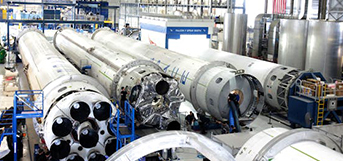Machine learning is everywhere. It exists when Gmail suggests a smart reply to your mail, when you try to look for answers on search (ranking based on relevance), when YouTube, Netflix and Spotify suggest what shows or songs are of your interest (recommendations based on preference), when Facebook identifies faces while tagging (Face detection and classification) and when Amazon displays ‘customers who bought this also bought this’ (clustering based on similarity). In short, the idea is currently all pervasive and here to stay.
Why is it the need of an hour?
Considering the pace at which top companies and products are adopting machine learning, it is high time that product managers become aware of what ML can do, both within their industries or in general.
As Mark Cuban said,
“Artificial Intelligence, deep learning, machine learning — whatever you’re doing if you don’t understand it — learn it. Because otherwise you’re going to be a dinosaur within 3 years.”
Before we delve deeper into machine learning and start identifying opportunities, let’s try to understand a few do’s and don’ts.
ML is a tool and we first need to define a business problem
Though ML has a lot to do with technical prospects, its foundation is built on asking the right questions, to solve relevant business problems, and create more business impact.
Getting the right data is crucial
Access to more and cleaner data enables organizations to gain deeper insights, at various levels of granularity and detail, thus resulting in better decision making overall.
Building safety nets to mitigate the risks of ML predictions going wrong
This is a rather critical aspect overall, as ML is still not completely foolproof and reliable so better safety nets would help in generating better business results.
—————————————————————————————————————————————————–
Moving forward, let us understand how machine learning can help you deliver business impact by exploring the opportunities it can provide.
Dealing with the volume and complexity of data with ease
If any activity requires users to go through a lot of data as a means to complete their task, ML enables expedite processing. Few common use cases are document retrieval — e.g. finding all the documents that are relevant to say a legal case or medical information (this goes beyond just keywords, into relevant contextual search), automated classification of documents by topic and keywords, automatic summary of the content, extraction of pertinent information from large amounts of content — e.g. finding specific terms in vendor contracts etc.
‘Content’ here applies to all types of media, not just text. For example, when you search for courses related to machine learning, you will get to see relevant suggestions based on your own search patterns and that of people similar to you.
Customization and Personalization

Recommendations for products or services based on user preference and past behavior patterns – This allows an app to recommend movies/songs/shows/products based on things bought/viewed in the past or by clustering similar things together. This enables users to find things of interest without having to go through an entire catalog or list.
Predictions and Forecasting
 A major problem that ML tries to solve is the matter of preference and choice. Instances like – ‘would the user like this story to appear in their feed?’ ‘would they prefer buying this product because they buy such things in general?’ require you to predict user behavior and their expected actions, and in these scenarios, ML is a good fit.
A major problem that ML tries to solve is the matter of preference and choice. Instances like – ‘would the user like this story to appear in their feed?’ ‘would they prefer buying this product because they buy such things in general?’ require you to predict user behavior and their expected actions, and in these scenarios, ML is a good fit.
As a tool to forecast sales based on historical data from past years – ML models consider various factors while generating forecasts, taking into account aspects like seasonality, location and demographics as well. Domains like sales forecasting, inventory usage, supply demand, all of these can benefit from an application of ML.
Human Engagement via natural language

In the attempt to make machines understand human language, large amounts of data is fed into these learning systems related to various language dialects, voice intonations, different regional changes etc, which are then mapped analysed by ML, resulting in capabilities of giving instructions and tasks in a natural language format – e.g Alexa and Google Assistant.
Anomaly Detection
One of ML’s biggest strengths is pattern recognition. Because systematic repetitions lead to patterns in even large and seemingly disparate forms of data, ML can notice such patterns and highlight anomalies. These can be put into applications like fraud detection and cleaning of data sets.
Enhancing Customer Experience
Using various facial recognition algorithms, ML can aid businesses and product owners understand customer needs, identify pain points as well as make note of areas of delight. These can be used in various ways, from improving customer experiences at various levels, to creating new products and business opportunities.
As you can see from our brief introduction to ML above, the capabilities are massive and are pertinent only to the limits of imaginative use. So, what will you use this tool for?




